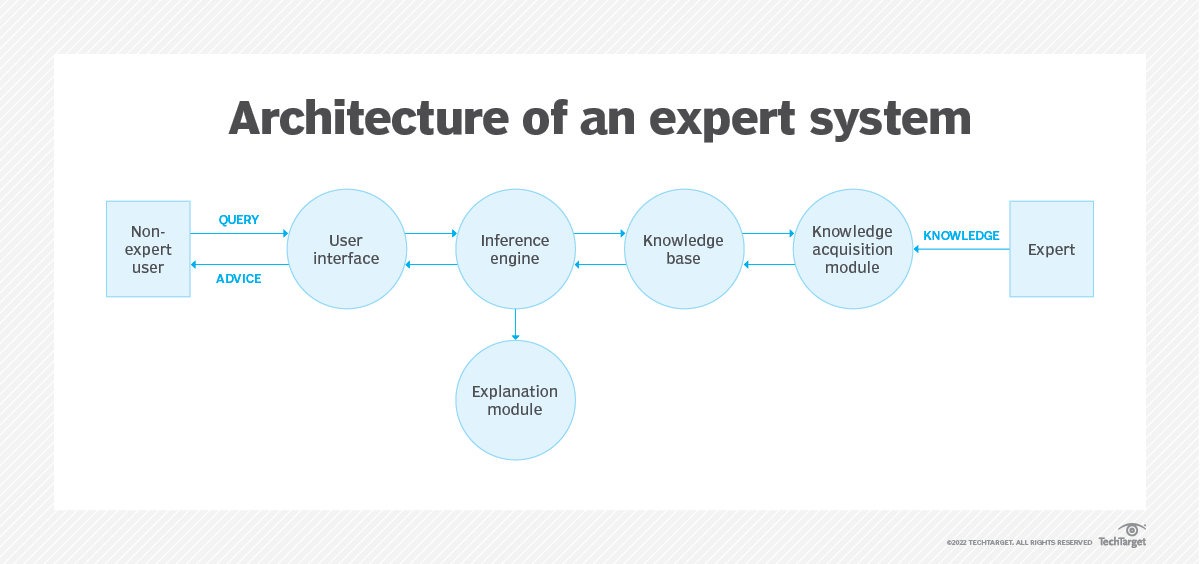Announcements
- Achieving endpoint visibility to ward off the threat of a breach has never been more important than it is in the age of data proliferation and hybrid workplaces. Multiple endpoints and locations heighten that risk, making it essential for CISOs and IT security teams to overcome common challenges. Find out how organizations can reach true endpoint visibility in order to effectively secure their employees, customers and supply chains. Register for the Successfully Securing Endpoints & Mitigating Threats summit to get free thought leadership from top IT Security and Threat Intelligence speakers, vendors and evangelists in the form of live webinars, panel discussions, keynote presentations, and webcam videos.
- As IT Service Management drives Digital Transformation, 2022 is seeing investments in the discipline continue to grow. Thanks to innovations in AI and ML, ITSM has enabled businesses to survive the pandemic and transform organizations. As new innovations continue to shape the face of ITSM, it’s time to take another look at the effect of automation on service management, DevOps, monitoring and metrics and more. Join the Driving Innovation & Automation in IT Service Management summit to hear from experts as they uncover advances across the ITSM spectrum and share how your business can benefit.

The Emergence of the Modern Studio Model
The newspapers (okay, the social media news, and what passes for news on the dying media of television) have been banging the drums of recession for nearly the last six months. The economy is going to go into a tailspin, everyone’s going to be out of a job, inflation will spiral out of control, and soon it will be the Weimar Republic all over again where everyone is walking around with wheelbarrows full of $100 bills just to buy a loaf of bread. Here and there, companies are beginning to announce layoffs – Microsoft just this week announced a 1% reduction in force. It’s shades of 1985, where the stock market dropped nearly 10% in one day, resulting in a recession that lasted … oh, about five months. No one talks much about the recession of 1985 because there really wasn’t one.
It’s worth noting that oil prices have been dropping pretty steadily for the last two months or so and is now priced at under $100, spot on the barrel, with futures dropping to about $92 a barrel by December 2022. Inflation hit a high, but again, the measurement of inflation is usually about eight to ten weeks out of date as you have to gather the data and analyze it. Proxy measures indicate that inflation too is dropping, housing prices have stalled and the interval between home purchases is now rising (mostly in response to rising interest rates). Food prices and finished goods prices are going down (through the mechanism of discounting). In other words, the economy is cooling down, but it appears to be heading for a 1985 landing.
So, are we going to see mass layoffs in the next few weeks? A funny thing happened on the way to the unemployment line. It ran afoul of the Great Retirement. In the IT sector, for instance, more than 60% of all work is being done remotely in 2022, as compared to 37% in 2019. Earnings might be down (something that actually has to do with macroeconomic phenomena and demographics), but companies are nervous about shedding a lot of jobs. Why? Because they might not be able to get those workers back.
In 2019, I wrote a couple of articles for Forbes online, one on the End of Agile and the other on The Studio Model. This article, coming about a year before Covid hit, laid out where I saw businesses heading – and it wasn’t, in fact, towards Agile. Instead, I argued that IT (and, for that matter, all knowledge-based companies) were in fact, becoming studios. In the Studio Model, you spend a lot of time grooming projects, then over the course of months or years, different people, mostly specialists, would work on some aspect of the project, from writers to actors, artists, and videographers, to editors and marketers, to post-production, music, and distribution.
One of the Studio Model’s key aspects was that people moved on to projects, completed their part, then moved off that production and to other projects – though not necessarily with the same company. In publishing, movie and television production, gaming, and increasingly software, people tended to stay in the same geographical area because that’s where the work was, not because they were especially loyal to this or that company. Once you remove the geofencing limitation from the equation, once remote work hits a specific threshold, then people no longer have to remain in the same area to maintain a livelihood – the workforce becomes far more fluid.
Most people in the knowledge arena do not necessarily want to go back to the office for several reasons, but one of them is this growing awareness that the age of continuous work is over. If people sit idle too long (without work to do), they risk getting cut at a moment’s notice, leading to severe personal disruption. If, on the other hand, they work on a time-boxed project, they generally have a good idea about where and when they will be valuable in that mix, and as importantly, can plan early for the day when the work is done and they are no longer necessary. This also pushes another reaction – people are beginning to demand more for their time because they know that at the end of the project, they have no guarantees of continued work with that employer.
This is the flip side of the social contract. When long-term (several years) employment was a given, people would agree to a lower hourly wage because it meant stability and a guarantee that they would be compensated for their labor. Yet, that social contract was broken by employers who assumed that people would work for less and less even when they did not provide that stability (or to put it into current jargon, work become a trustless system). For a while, the employers were right because geofencing pretty much guaranteed that people had a very small pool of potential employers to draw from. Break the geofencing requirement, and people’s ability to move to new projects jumps dramatically. It also means that the guarantee that a company has that they will have the staff that they want at any given time is no longer in force.
Work patterns do not change quickly normally. The pandemic moved trends that ordinarily would have taken a decade or more to happen and compressed it into a couple of years. A side effect of this transformation, however, is that the workforce has become more resilient to what is now the Studio Model pattern, one where the goal is not necessarily long-term stability so much as the completion of specific productions. Investment patterns will likely change as well, with investors essentially laying down the seed money to see a production through in exchange for a cut of the profits and self-funding (or crowd-funding) being at least one avenue to raising the necessary capital.
It is ironic that NFTs (or some future variant) may have some utility. In effect, the NFT serves as a certificate of investment that can then be used to track returns upon successful completion of a project’s stated goals. Such an approach also makes it possible to better manage more public projects, open source endeavors and ongoing shared world universes, which have traditionally done a poor job of rewarding technical or creative contributors. More in this in an upcoming DSC Weekly editorial.
In Media Res,
Kurt Cagle
Community Editor,
Data Science Central
Data Science Central Editorial Calendar: July 2022
Every month, I’ll be updating this section with a lot of topics that I’m especially looking for in the coming month. These are more likely to be featured in our spotlight area. If you are interested in tackling one or more of these topics, we have the budget for dedicated articles. Please contact Kurt Cagle for details.
- Bayesian Graphs
- Gato and GPT-3
- Labeled Property Graphs
- Telescopes and Rovers
- Data Meshes
- ML Transformers
- AGI
- RTO vs WFH
If you are interested in posting something else, that’s fine too, but these are areas that we believe are hot right now.
DSC Featured Articles
- The Business Impact of Robotic Process Automation Scott Thompson on 13 Jul 2022
- Why We Need to Move From Data-First to a Knowledge-First World Juan Sequeda on 12 Jul 2022
- Real-Time Apps: Why Node.js is the Ideal Choice Ryan Williamson on 12 Jul 2022
- Web Analytics Dashboards Carry a World of Data for Various Purposes Karen Anthony on 12 Jul 2022
- Top Picks for Blockchain Certifications KathieAdams on 12 Jul 2022
- Critical Role of Analytic Profiles in Developing Data Products Bill Schmarzo on 11 Jul 2022
- Metaverse use cases: Which industries could the metaverse impact? ajitjaokar on 11 Jul 2022
- Features of IIoT (Industrial Internet of Things) Seamless Connectivity and Data Acquisition DineshBhol on 11 Jul 2022
- Navigating the Costs of Cloud Networks Rumzz Bajwa on 11 Jul 2022
- Data Observability Vs Data Quality: What makes them different? Vanitha on 11 Jul 2022
- Talent Management and Technology-A Perfect Blend Aileen Scott on 11 Jul 2022
- The Two Types of Agility You Need Howard M. Wiener on 11 Jul 2022
- Webinar Series -The rise of the Modern DataStack and the Modern Data Quality Platform Vanitha on 11 Jul 2022
- Wanna become Value-driven? Time for a Culture Shift! Bill Schmarzo on 06 Jul 2022
- DSC Weekly 05 July 2022: Standardizing a Metaverse Kurt Cagle on 05 Jul 2022
- Education Trends 2022: Data Science in schools Aileen Scott on 05 Jul 2022
- Databricks open sourcing delta lake is good news for AI ajitjaokar on 05 Jul 2022
- DSC Weekly 28 June 2022: Strokes, AI and Cognition Kurt Cagle on 05 Jul 2022
- The Riemann Hypothesis in One Picture Vincent Granville on 04 Jul 2022
- Data Analytics Recession Playbook: Make Your Data Work Harder…And Smarter! Bill Schmarzo on 01 Jul 2022
- Definitive Guide: An Insight Look At PHP Workers Edward Nick on 29 Jun 2022
- Pharmacy Management: How it is Impacted by AI Ryan Williamson on 25 Jun 2022
- From Text To Speech: An Overview Aileen Scott on 25 Jun 2022
- Healthcare AI Chatbots: Impact on Patient Journey Ryan Williamson on 25 Jun 2022
- Datasets and Data Annotation — The Building Blocks for Healthcare AI Roger Brown on 25 Jun 2022
Picture of the Week


